Our Favorite Outdoor ║┌┴¤│ď╣¤═° Photography of the 2010s
What goes into making a great ║┌┴¤│ď╣¤═° photograph? Our designers and photo editors picked their favoritesÔÇöfrom sky diving record attempts to skiers hucking 60-foot cliffsÔÇöfrom the magazine's Exposure section and describe what they love about each
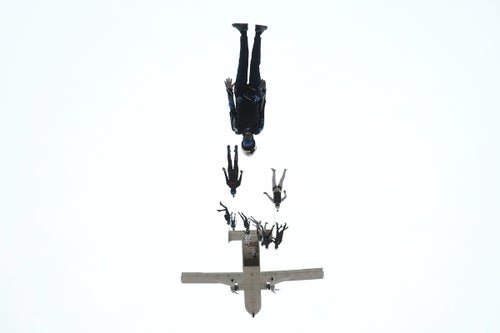
To set the world record for largest head-first formation by an all-women team, 65 sky divers spent four days jumping out of three airplanes in Arizona. They took 16 tries to get it right. Jessica Brownlow, one of the participants, had a helmet-mounted GoPro and captured this shot of her peers floating in midair just a few seconds after exiting the plane. “We were initially attracted to this photo for its abstractness and contrast,” says Petra Zeiler, ║┌┴¤│ď╣¤═°’s art director. “It feels very peaceful.”
The Tools: GoPro Hero5 Black with Cookie G3 mount, ISO 100, f/2.8, 1/1,400 second
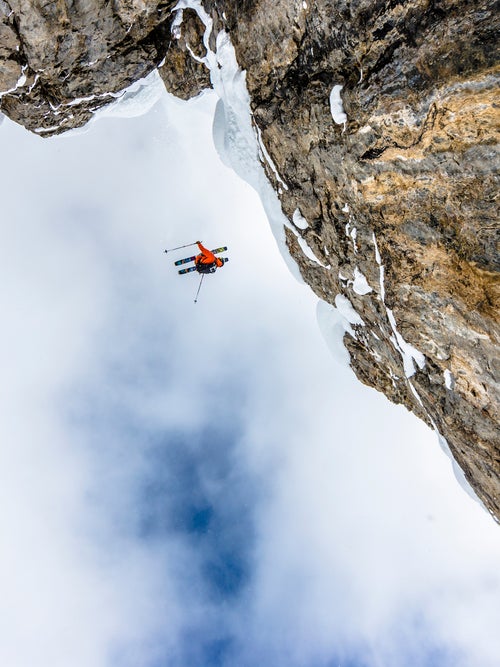
Eric Balken had never hit this 60-foot cliff in the backcountry of Alta, Utah, before the day in 2017 when he ski toured there with McIntyre for a photo shoot. After watching crew member Caston Oliver land the jump, Balken decided to go for it. McIntyre skied down a couloir next to the cliff so she could shoot Balken from directly below, and wedged herself as close to the rock as possible should a chunk of the cornice break as he took off. Carston counted Balken into the jump so that McInty're would know when he was nearing the lip (she couldn't see the run-in from her spot below). She started shooting as soon as she saw Balken’s ski tips. “I love the composition and disorienting feel of this photo,” says Zeiler. “The airy, calming blue sky mixed with the gritty details of the rock creates a beautiful contrast.”
The Tools: Canon EOS6D, 14mm f/2.8 lens, ISO 125, f/8, 1/1,000 second
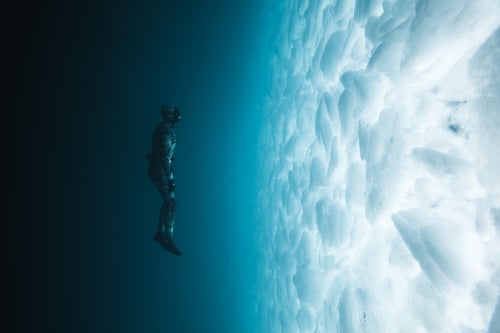
In the winter of 2017, the water of Lake Huron and Georgian Bay froze 50 yards from shore. Geoff Coombs and fellow freediver Andrew Ryzebol went out with wetsuits to explore the ice from underneath, which is when Coombs shot this image. “I was trying to create a photo that gives a feeling of wonder and peace,” he says. To that end, he flipped the image sideways to enhance the outer-space look of the scene. It worked. “This photo is so calming and mysterious,” says Zeiler. “The way Coombs chose to compose and crop this photo makes it feel eerier. I can’t help but wonder how long Ryzebol has been down there.”
The Tools: Canon 6D, 24mm f/2.8 lens, ISO 100, f/2.8, 1/400 second
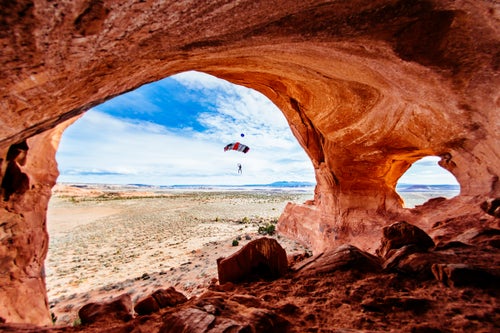
Matt Baldelli used a 16-millimeter fisheye lens to capture this sweeping shot of his friend Matthew Holmes jumping off the top of Looking Glass Rock outside of Moab, Utah. He staged himself as far back as he could to fit both arches in the frame. “The perspective from the inside out shaped by the circular arch catches the viewer’s attention,” says Zeiler. “It makes you feel as if you were in that moment with the photographer.” Aside from that, Zeiler loves the way the warm reddish rock and deep blue sky complement one another, and “the looniness and vastness” of the jumper painted against an open landscape free of any other signs of human habitation.
The Tools: Nikon D800, 16mm fish-eye lens, ISO 200, f/2.8, 1/2,000 second
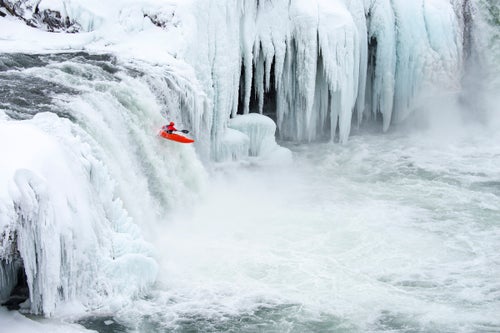
Michael Neumann had wanted to take a photo of someone paddling the Godafoss waterfall on Iceland’s Sk├ílfandaflj├│t River since he first saw the falls in 2013. Three years later, he returned with Matze Brustmann, a German kayaker who sent the half-frozen falls just hours before water levels rose, causing ice chunks to fall next to his chosen line. For Zeiler, the feat behind the photo makes the final result all the more impressive. “The falling water paralleled with the ice formations is incredible,” she says. “The color of the paddler stands out, and combined with action, your eye is drawn to him first thing.”
The Tools: Nikon D4, 80—400mm f/4.5—5.6 lens, ISO 100, f/6.3, 1/800 second